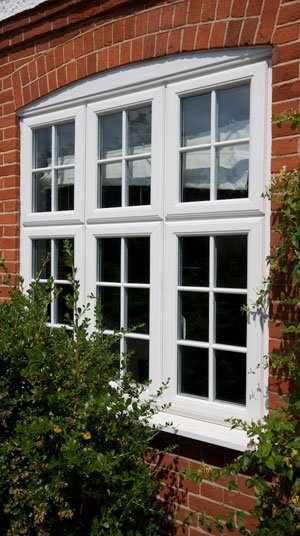Many customers call us concerned at this “strange” phenomenon however this occurrence actually demonstrates the effectiveness of the glazing. Previously, where condensation occurred internally the “cold spot” of the sealed unit is now external and proves that the heat is being retained rather than lost through the double glazed sealed unit. The condensation will naturally evaporate once the atmosphere warms up.
 Customers today want the finest in insulated and thermally efficient windows and a byproduct of this is superior efficiency. A rated PVC-u windows, supplied as standard by C & L Windows may be prone to external condensation. It is simply the window and the glass doing its job of keeping the heat in. For those that are more technically minded, Pilkington Glass, who many will know as the world’s largest producer of glass say:
Customers today want the finest in insulated and thermally efficient windows and a byproduct of this is superior efficiency. A rated PVC-u windows, supplied as standard by C & L Windows may be prone to external condensation. It is simply the window and the glass doing its job of keeping the heat in. For those that are more technically minded, Pilkington Glass, who many will know as the world’s largest producer of glass say:
The phenomenon is a natural and predictable event caused by the outer pane of the glazing being colder that the glass that it replaced. With single glazing and older style double glazing a larger proportion of heat was lost to the outside through the glass. With modern low e glass products more of the heat is kept inside and the outer pane is not heated as much.
Moisture condenses out of the air onto a cold surface that is said to be below the dew point. The dew point varies with the air temperature and the amount of moisture it contains. In spring and autumn in particular the glass temperature can fall to a low level during the night and the dew point can be comparatively high in these seasons. The glass is more often likely to be below the dew point in these conditions and the moisture condenses onto the surface.
So there is nothing to worry about if you see external condensation on your new double glazed windows. External condensation forms on the exterior surface of the outer pane of glass when its surface temperature drops below the outdoor dew point temperature – increasingly likely on an Autumn or Winter morning, hence why it is only in these current climatic conditions that it occurs.
External condensation on double glazing, if it occurs can be caused by a number of factors such as South or North facing properties, location (greater moisture in the northern regions) etc.
C & L Windows and Conservatories Ltd
65, Seymour Road
Gloucester
Gloucestershire
GL1 5PT
65, Seymour Road
Gloucester
Gloucestershire
GL1 5PT
01452 526028
www.candlwindows.co.uk
www.candlwindows.co.uk

No comments:
Post a Comment